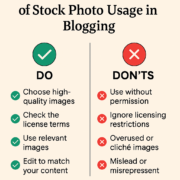Integrating AI into UX Design: Practical Tips and Best Practices
Your users expect nothing short of exceptional experiences. However, achieving this level of user satisfaction can be challenging, especially when traditional design methods fall short in addressing diverse and dynamic user needs.
The good news is that integrating Artificial Intelligence (AI) into your UX design can address these challenges. 62% of experienced UX designers see AI as being very important in their work. AI technologies can transform how you understand and interact with your users, providing insights and capabilities that significantly enhance user satisfaction and design efficiency.
In this article, we will explore practical tips and best practices for integrating AI into UX design
Understanding AI in UX design
AI in UX design refers to the application of intelligent systems to analyze user data, predict your needs, and create interfaces that enhance your interaction with digital products. These systems can learn from your behavior, adapt to your preferences, and provide you with a seamless and enjoyable experience.
Integrating AI into UX design can bring many benefits to your business, enhancing your user satisfaction and design efficiency.
- Improved user experience: AI can create more intuitive and responsive interfaces by learning from your users’ interactions. For instance, AI-driven recommendation systems can suggest products or content that align with your user preferences, creating a seamless and enjoyable experience.
- Enhanced personalization: Personalization is a cornerstone of modern UX design. AI enables highly tailored experiences by analyzing your data to deliver content, features, and interfaces that resonate with you. This level of personalization fosters a deeper connection between you and the digital products you interact with, making your experience more engaging and relevant.
- Increased efficiency and productivity: AI automates routine tasks, freeing up designers and developers to focus on more creative and strategic aspects of their work. For example, AI can automate user testing, generate design variations, and even assist you in coding, significantly speeding up your design process and reducing the time to market.
While the integration of AI in UX design offers immense potential, it also presents challenges and ethical considerations that must be addressed.
Potential pitfalls and ethical considerations: One major concern is data privacy. AI systems rely on vast amounts of user data, raising questions about how this data is collected, stored, and used. Ensuring that your AI applications comply with privacy regulations and are transparent about data usage is crucial.
Balancing automation with human touch: While AI can automate many aspects of UX design, it’s essential to maintain a balance between automation and the human touch. Over-reliance on AI can lead to impersonal interactions and a lack of empathy in design. Human-centered design principles should remain at the core, with AI serving as a tool to enhance rather than replace human creativity and intuition. This ensures that your experience remains both personalized and empathetic, maintaining a connection between you and the digital product.
Practical tips for integrating AI into UX design
Integrating Artificial Intelligence (AI) into UX design can revolutionize how your users interact with digital products. By aligning AI capabilities with user needs, you can create intuitive, personalized, and efficient experiences. Here are practical tips to seamlessly integrate AI into your UX design process.
Identifying user needs and AI capabilities
Understanding your users’ needs is the foundation of effective UX design. Start by conducting thorough user research to identify pain points and areas where AI can make a significant impact. Use surveys, interviews, and user testing sessions to gather insights.
Once you’ve identified the pain points, map them to relevant AI capabilities. If your users need personalized content, consider natural language processing (NLP) and machine learning algorithms that can analyze user behavior and preferences. If they require quicker support, explore chatbots and virtual assistants. This alignment ensures that the AI solutions you implement directly address your users’ needs, enhancing their overall experience.
Using text-to-video AI in UX design
Text to video AI has a wide range of applications in UX design. It can be used to create user tutorials, onboarding experiences, promotional videos, and more. By integrating this technology, designers can enhance your client’s interaction with digital products, making it easier for them to understand and engage with the content.
Imagine you’re new to a software application. Instead of reading through lengthy manuals or static guides, you can watch a concise and visually engaging video that walks you through the essential features and functionalities.
Also, dynamic content is crucial for maintaining your audience’s interest and engagement. Text-to-video AI allows for the creation of visually appealing videos that can be used in marketing campaigns, social media posts, and product demonstrations. For instance, if you’re exploring a new product on an e-commerce site, a video generated from product descriptions and reviews can provide a more immersive and informative experience, helping you make informed decisions.
Writing a standard website privacy policy
A well-crafted privacy policy is a cornerstone of good UX design, demonstrating your commitment to user privacy and legal compliance. By clearly explaining how you collect, use, and protect user data, you can build trust and provide a safer, more transparent user experience.
Laws like the General Data Protection Regulation (GDPR) in Europe and the California Consumer Privacy Act (CCPA) in the US require websites to disclose how they collect, use, and protect user data. Without a privacy policy, your website could face hefty fines and legal action. Ethically, a privacy policy shows that you respect your users’ privacy and are committed to handling their data responsibly.
Let’s check out some guidelines on how to write a standard website privacy policy that represents your brand well.
- Use clear and concise language: Legal jargon can be confusing and off-putting. Write your privacy policy in clear, simple language that your users can easily understand. Avoid technical terms unless necessary, and always provide explanations.
- Keep the policy up-to-date with regulations: Privacy laws and regulations are constantly evolving. Regularly review and update your privacy policy to ensure compliance with the latest legal requirements. This proactive approach will help you avoid legal issues and maintain user trust.
- Providing easy access and visibility to users: Make sure your privacy policy is easy to find. Place a link in your website’s footer, during account sign-up, or within your app settings. Ensure that users can access and read the policy without any barriers.
Creating AI-powered prototypes
Before fully integrating AI into your product, create prototypes that incorporate AI elements. Use tools like Adobe XD, Figma, or Sketch, combined with AI platforms like IBM Watson or Google Cloud AI, to build functional prototypes. These prototypes should demonstrate how AI will interact with users, providing a tangible way to test and refine your ideas.
Conduct usability testing with AI elements
Once your AI-powered prototypes are ready, conduct usability testing to gather feedback. Invite users to interact with the prototypes and observe how they respond to AI-driven features. Do they find the recommendations helpful? Is the chatbot providing accurate and timely responses? Collect qualitative and quantitative data to assess the effectiveness of the AI elements.
Best practices for AI-driven UX design
Successful AI-driven UX design requires adhering to best practices that prioritize user needs, foster collaboration, and stay current with technological advancements. Here are essential practices to ensure your AI-driven UX design is effective and user-centric.
User-centric design principles
Your users are the heart of your design process. When integrating AI, always prioritize their needs and experiences. Start by conducting thorough user research to understand their pain points, preferences, and behaviors. Use this data to guide your AI implementations.
Also, transparency is crucial in building trust with your users. Clearly explain how AI is used within your product and how it benefits them. Provide insights into the data collected and how it influences AI decisions. Users should understand why certain recommendations or actions are made by the AI.
Collaboration and interdisciplinary approaches
AI-driven UX design is inherently interdisciplinary. Collaborate closely with data scientists, AI specialists, and UX designers to create holistic solutions. Data scientists and AI specialists can provide insights into what’s technically feasible and help interpret complex data, while UX designers ensure the user interface is intuitive and engaging. Involve team members from various disciplines early in the design process to ensure diverse input and comprehensive solutions.
Staying updated with AI trends
Regularly explore new AI tools, frameworks, and techniques that can enhance your UX design. Subscribe to industry publications, attend conferences, and participate in online forums and communities to stay informed about cutting-edge developments.
Encourage your team to take online courses, attend workshops, and obtain certifications in AI and UX design. This ongoing education ensures that your team remains proficient in the latest technologies and best practices.
Embracing AI for superior UX design
As you venture into integrating AI into your UX design, it’s clear that this technology holds immense potential to transform how users interact with your digital products. By keeping user needs at the forefront, fostering interdisciplinary collaboration, and staying current with AI advancements, you can create experiences that are intuitive, personalized, efficient, and engaging.
AI-driven UX design offers numerous benefits, from automating routine tasks and improving user satisfaction to delivering highly tailored content and interfaces. However, it’s crucial to address ethical considerations, such as data privacy and transparency, to build and maintain user trust. Balancing the power of AI with a human touch ensures that your designs remain empathetic and connected to the people using them.
By embracing AI thoughtfully and strategically, you can revolutionize your UX design process, setting a new standard for excellence in digital experiences.




